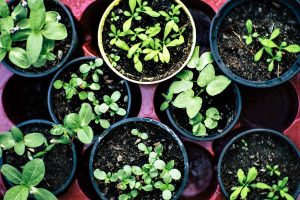May & Jun 2022 Whitsunday Conservation Council Inc
In this Edition click on the > toggle headline to read more
Junk Carbon Credits
One in five carbon credits issued by the LNP Federal Government’s $4.5 billion Emission Reduction Fund (ERF) do not represent real abatement and are essentially ‘junk’ credits. Read more below
This is a multi-million dollar taxpayer funded RORT that the LNP federal government allowed to benefit certain landholders and the CO2 polluters.
This scheme is also being used by the federal government to meet its carbon reduction targets. This means that taxpayers are funding a non-existent reduction in carbon emissions that allows the government to cheat on its carbon reduction commitments.
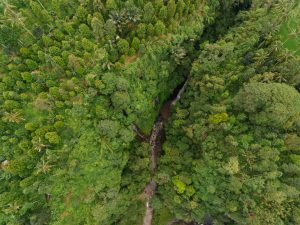 ACF Speaks Out
ACF Speaks Out
The Australian Clean Energy Regulator has revealed that more than 10 per cent of the areas included in projects that are intended to regenerate forests already had forests on them when they started!
Key findings from research by the Australian Conservation Foundation include:
- Australian Carbon Credit Units (ACCUs) generated by the ‘avoided deforestation’ method of carbon abatement are awarded to landholders who surrender land clearing permits and commit to retain vegetation on their properties.
- The Australian Government has committed to buy 26.3 million ACCUs from avoided deforestation projects, using around $310 million of taxpayers’ money, to meet its climate targets.
- Analysis shows projects are being issued ACCUs for retaining vegetation that was never going to be cleared, meaning anyone purchasing these credits is buying non-existent abatement.
- The avoided deforestation method is currently responsible for more than 20% of the total number of ACCUs that have been issued under the ERF.
- Analysis shows the avoided deforestation method fails to meet legislated offset integrity standards.
“The lack of integrity relating to Australia’s carbon abatement methods calls into question the overall value of the ERF and its success as a mechanism to help Australia meets its climate targets,” said Richie Merzian, Climate & Energy Program Director at the Australia Institute.
“There is legislation in place that requires landholders not be paid to avoid emissions that were never going to be generated. The Australian Government has failed to ensure that requirement has been met.”
“Just as it would be a poor use of taxpayer funds to pay non-smokers to stop smoking, this method of accounting sees taxpayer dollars paying to retain vegetation that was never going to be cleared. Our research shows that many of Australia’s carbon credits could be little more than hot air,” Mr Merzian said.
“The Emissions Reduction Assurance Committee exists purely to ensure the integrity of the ERF,” said Annica Schoo, Lead Environmental Investigator at the Australian Conservation Foundation.”
“In 2019, we wrote to the Committee raising serious concerns about the integrity of the methods and the ERAC conducted a review.”
What happened to the review?
“Two years later, the Committee has not released any findings. In that time, the Clean Energy Regulator has issued approximately $68 million worth of questionable carbon credits to projects that use the avoided deforestation method.”
“Our findings demonstrate that the avoided deforestation method—which makes up one in five of all Australian carbon credits—is deeply flawed. The Committee’s review should have reached this conclusion at the beginning of the Morrison Government’s term.”
“Protecting and regenerating nature in Australia is an important part of the climate solution. Methodologies must be designed with integrity to ensure benefits to nature and the climate are being realised.”
“The Morrison Government should be embarrassed by its flagship climate policy. Australians want real climate action, not cheap tricks and hot air,” Ms Schoo said.
Our Government Intervenes to Help the Polluters
John Durie reported in the Weekend Australian 5-3-22 that Energy Minister Angus Taylor has allowed holders of early carbon credit units to escape their contracts with the government. The impact will mean that more carbon credits are traded with zero links to CO2 reduction.
Australia is not alone
Fossil fuel companies are buying forests overseas that were never going to be cleared and using complex schemes to claim that the energy they export is “carbon neutral”.
According to researcher Ben Elgin, Nature Conservancy, the world’s biggest environmental group, became a dealer of meaningless carbon offsets. https://www.bloomberg.com/features/2020-nature-conservancy-carbon-offsets-trees/
Analysis below from the Taskforce in Scaling Voluntary Carbon Markets, showed that carbon offsets worldwide are not effective in reducing carbon dioxide emissions.
China Carbon Credits Data Fraud
Karoline Kan in Bloomberg Green’s Climate Report says:
China’s carbon market, hindered by low prices and thin trading, has struggled to become a useful tool in the country’s efforts to rein in its world-leading emissions. Now, accusations of data fabrication and questions over verification methods have added a new roadblock.
A recent provincial inspection unearthed widespread problems with emissions data submitted by power plants, who have to pay for every ton of carbon dioxide they generate that exceeds an allocated amount. Four consulting firms that help utilities prepare their submissions were criticized last month in connection with negligence or falsifying data.
Early teething issues seem to have been anticipated by Beijing. It launched the carbon market last year after several delays with just one industry — power generation — and ample allocations of free emissions allowances to keep prices low so compliance wouldn’t be too much of a burden. The idea was to hammer out the technical details, then slowly enroll seven other industries over the ensuing couple of years. By the end of the decade, when China plans to reach peak pollution, the government would be able to use it as a tool to effectively control emissions.
But the data problems threaten to slow the rollout and prolong the time it takes carbon pricing to help reduce emissions. “If the data fraud issue can’t be sorted out in only one industry, then hastily expanding the scheme to eight industries will only make the problem worse,” said Yuan Lin, lead analyst of carbon research at Refinitiv.
What is a Carbon Credit?
A Carbon Credit is an emission reduction credit created by an organisation in producing less carbon dioxide or other greenhouse gases in the atmosphere than would otherwise have occurred.
This credit is a negotiable instrument funded by a government for the reduction, avoidance, or sequestration of one metric tonne of carbon dioxide or greenhouse gas equivalent.
The key concept is that offset credits are used to convey a net climate benefit from one entity to another. The cost of purchasing credits is intended to encourage industries to reduce carbon emissions.
Further reading:
https://www.acf.org.au/integrity-concerns-around-junk-carbon-credits
https://australiainstitute.org.au/report/carbon-cowboys-and-cattle-ranches/
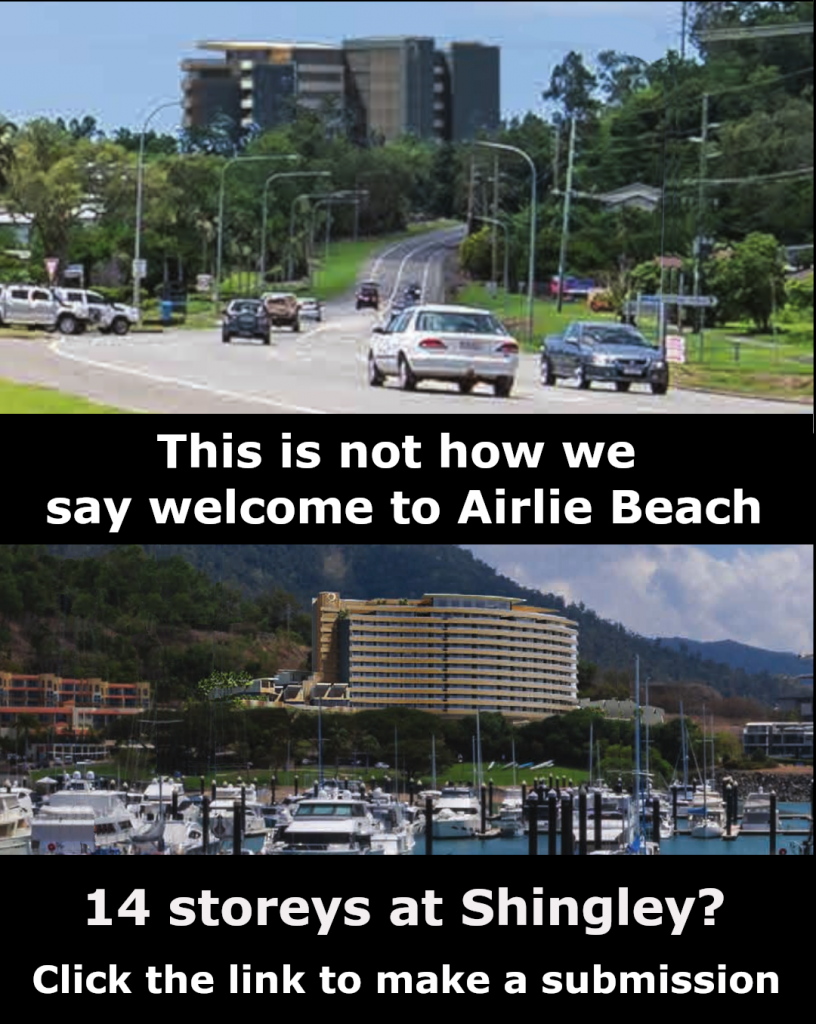
The Whitsunday Regional Council (WRC) is Hell Bent on High Rise but it stumbled when on 11-5-22 the WRC voted unanimously to reject the application to build a fourteen story building on the old Ivana Trump site at Shingley Beach.
The change is believed to have resulted from the convincing campaigns by Save Our Foreshore and Fight for Airlie and the indisputable statements read out at the meeting from concerned residents: Jack Stansfield (Airlie Beach) Phil Bryant (Airlie Beach) and Clay Bauman (Cannonvale).
You may have made a submission against high rise for this project or for the one at Port of Airlie. A big THANK YOU because without your support Airlie will be trashed by developers
Submissions have closed but the fight may not be over
WHITSUNDAY COMMUNITY SAYS NO TO HIGH RISE ON THEIR FORESHORE
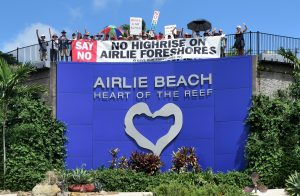 The controversial 47mtr building approval given by the Whitsunday Regional Council 24 Nov21 to Meridien AB Pty Ltd (Port of Airlie) has seen the community rally together as never before.
The controversial 47mtr building approval given by the Whitsunday Regional Council 24 Nov21 to Meridien AB Pty Ltd (Port of Airlie) has seen the community rally together as never before.
Despite 2242 submissions made against the proposal, none in favour, 5 councillors, none from Airlie Beach, approved the 12 story (47mtr) tower in a 3-5 story zone, massively outvoting the single Airlie Beach councillor objecting to the proposal.
The second councillor from the Airlie Beach/Cannonvale region was not able to vote as Council declared he had a conflict of interest after a family member submitted an objection to the development. Both councillors opposed to the high rise have decades of experience in the tourism industry, whereas none of the other 5 councillors have any. 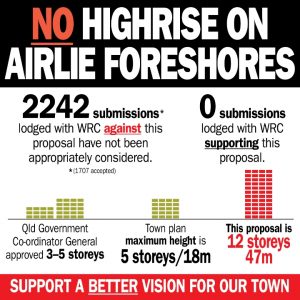
As soon as legally advised, and having no other options, WCC member and long running community group Save Our Foreshore Inc (SOF) launched the community action against the Council in the Planning and Environment (P&E) Court. SOF has successfully defended Airlie Beach and the wider region against 2 previous Airlie Beach public foreshore landgrabs and stopped a dangerous and polluting open cut shale oil mine on the Whitsunday coast and Goorganga Wetlands.
BACKGROUND: This 47mtr development is part of the Port of Airlie project; a State Significant development from the 1980’s-2000’s that since 2011 has been in receivership.
During the long approval process for this project, which would see the loss of an environmentally significant marine habitat replaced with a dredged marina and filled in bay for a commercial and housing suburb on the seabed, the community was widely consulted.
Acknowledging there would be negative impacts on visual amenity – in other words the views from properties on the slopes and surrounds of the bay – the Queensland Government finally approved the development with a maximum of 3-5 storeys in that foreshore area. Not 12 storeys that Whitsunday Council has approved and now subject to an appeal process from SOF in the P&E Court.
This developer, in receivership, also laid claim to a parcel of public parkland to create a wide access road to this high-rise tower, instead of the pedestrian walkway originally approved by the Qld Co-ordinator General. This may become a public road to nowhere, with maintenance funded by ratepayers, only providing access to the high-rise and any other subsequent developments on this Port of Airlie site.
![]()
Something is Very Wrong!
How can a Council’s planning department support a development that attracted 2242 objections; is so far outside the town plan’s guidelines, and at odds with Airlie Beach’s renowned low-rise, village atmosphere tourism image? And all with apparently with no tourist industry consultation.
The region’s planning documents do recommend that a ‘premium’ hotel in Airlie Beach is needed for the future. But as widely known and appreciated by the tourist industry and anyone else, except it seems the majority of Whitsunday councillors, current expectations for premium hotels, especially in a world-renowned picturesque location like Airlie Beach, are hardly compatible with, nor dependent on such a “premium” hotel being built as a high-rise tower block!
People can’t miss the large highway and Shute Harbour signs showing what we were promised and what Council has approved. 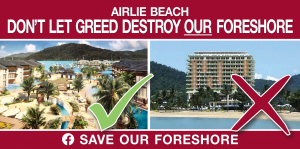
There are also banners on buildings around Airlie Beach.
 These billboard signs and banners are made possible by the massive community and business support SOF has received.
These billboard signs and banners are made possible by the massive community and business support SOF has received.
The appeal to the Planning and Environment Court vs Whitsunday Regional Council will be an expensive process but like our billboards SOF is confident of continuing community and business support.
Taking on Council, developers and the Queensland State Government is nothing new to SOF, but we do need your support.
 HOW YOU CAN HELP
HOW YOU CAN HELP
DONATE HERE via the GO FUND ME – STOP AIRLIE BEACH HIGHRISE – organised by SOF President Suzette Pelt. Funds raised will help meet legal costs of the SOF appeal to the Planning and Environment Court and other campaign expenses. Or direct deposits can be made to National Australia Bank BSB 084501 Account 575807657 Name Save Our Foreshore Inc. All SOF Inc. committee members are unpaid volunteers.
Thanks to everyone who has contributed to date. Updates can be found on the FaceBook page and Members & Supporters newsletters. Please contact SOF on saveourforeshore@whitsunday.net.au if you would like to join or support in any way. Save Our Foreshore Inc, President Suzette Pelt
SOF BACKGROUND and why we should be proud of their work
SOF became a founding community member of the Whitsunday Conservation Council in 2020, but SOF itself was formed in 2003 and successfully stopped the first private commercial high-rise proposal on the lagoon carpark public land, which is a reserve zoned for park and recreation.
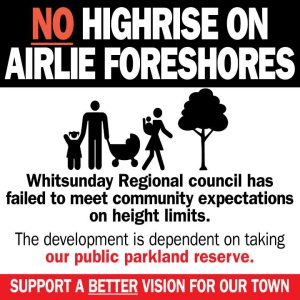
It took 3.5yrs of SOF led community protest, and a review by a State Government appointed independent assessor for that first high-rise proposal to finally be rejected by an embarrassed Beattie government on the basis that it did not meet uses under the Land Act.
Since then, the public land grabs have continued in one form or another and SOF along with the community has stood up to stop them time and time again.
The community should not have to repeatedly remind our mayor and councillors to listen to the community. It questions their honesty with the community and their much touted transparency. It says a lot about the level of leadership and diligence of the Whitsunday Regional Council.

If 70% of Queensland councils, including Mackay, are undivided, why isn’t Whitsunday?
Regional divisions are from the horse and cart days. So when Cr Clifford joined up with Acting Mayor Brunker to refuse the majority public decision to join the 70% of other undivided councils, you have to ask why.
Why indeed, when new councillors are told during their induction that divisions are irrelevant and that they are acting for the whole region collectively.
This follows on from an attempt by council to shelve the whole idea of being undivided! Having been caught out by vigilant locals, they gave us a mere two weeks to vote via a convoluted and intrusive process. Clearly elements of our council have decided that they want to stay in the horse and cart days.
It’s now a mere formality to approve the community’s majority vote and recommend that the Deputy Premier moves to make the region undivided. But these councillors voted to delay making that decision until after the next council election in 2024! Shelved until the 2028 election or maybe scrapped, six years from now.
Why did Cr Clifford ignore the 96% of votes received from Airlie and Cannonvale in favour of an undivided region? Why are councillors not listening to us – again?
Submissions have closed but the fight is not over
 Not long after the heavy rains come, the water in Pioneer Bay turns to brown as a layer of mud is washed down our creeks and drains and is finally deposited on the sea bed. The damage done to the foreshore environment is unsightly. It badly affects the marine life and seagrass beds that feed the dugongs, a tourist drawcard.
Not long after the heavy rains come, the water in Pioneer Bay turns to brown as a layer of mud is washed down our creeks and drains and is finally deposited on the sea bed. The damage done to the foreshore environment is unsightly. It badly affects the marine life and seagrass beds that feed the dugongs, a tourist drawcard.
The erosion is getting worse and the mud it creates is stirred up by increased boat traffic close to shore. Increased turbidity reduces the beauty and quality of foreshore areas that are affected.
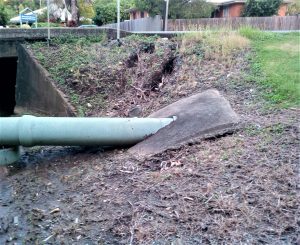 Erosion also damages infrastructure. The Altmann Avenue bridge in Cannonvale, is a good example of excessive spraying with herbicides that now threatens the road and will soon cost a lot of taxpayers’ money to fix. During heavy rains, the water that flows here carries soil and herbicide residues the few metres to the beach, alongside the VMR station.
Erosion also damages infrastructure. The Altmann Avenue bridge in Cannonvale, is a good example of excessive spraying with herbicides that now threatens the road and will soon cost a lot of taxpayers’ money to fix. During heavy rains, the water that flows here carries soil and herbicide residues the few metres to the beach, alongside the VMR station.
There are harmful side effects to human and marine life from using herbicides. We are told that the Whitsunday Regional Council (WRC) uses Roundup, a herbicide with glyphosate as the active ingredient. There is plenty written about this chemical on the web, some of it fairly alarming. The European Chemicals Agency classified glyphosate as causing serious eye damage and as toxic to aquatic life. Researchers claim it has entered our food chain and is linked to numerous ailments. Our concern is that there may be a risk of toxicity in our marine environment from overuse of this chemical. Clearly Less is Best.
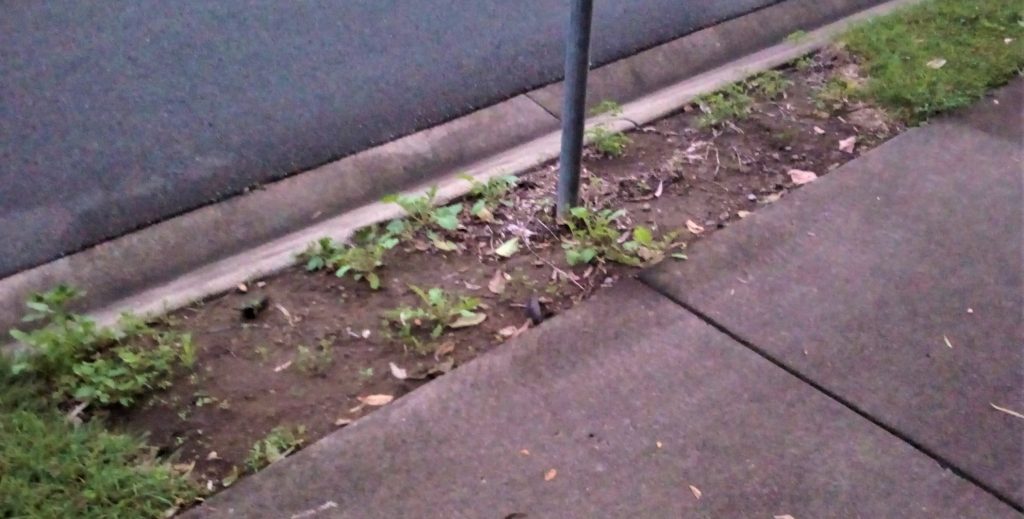
Why is this happening?
- Cost cutting in order to save on grass cutting around trees, poles and along embankments
- Exposed river and creek banks allow tonnes of soil to be washed into the sea
- Incorrect application even when spraying is the only option available
- Failure to understand the long term effect of spraying on soil erosion
And there’s another problem – Herbicide Resistance
Herbicide resistance is a genuine problem too. As weeds adapt to glyphosate then other, nastier and more expensive chemicals are needed. If the spraying is done badly this promotes resistance. We already have resistance emerging where frequent spraying is done. Mulching, weeding or even flames or steam machines are alternatives.
What can be done?
Several people have come to us with photos and the evidence is overwhelming. Your Whitsunday Conservation Council is in discussions with the WRC to improve the situation. It will take a while for the environment to recover but it will only worsen if we do not start doing something now.
- As a builder, make sure your projects do not lead to runoff situations.
- Notify the WRC if you see breaches of local laws.
- Keep an eye out for the tell-tale bald spots of over-spraying and report this to the WRC.
- Keep your local councillor aware of eroded creek banks and ask that something be done to prevent soil erosion.
 The well-known and much sought Spanish Mackerel has recently been in the news for all the wrong reasons.
The well-known and much sought Spanish Mackerel has recently been in the news for all the wrong reasons.
First, the latest research tells us that the Spanish Mackerel population is down to a mere 17 % of its original, unfished population. Not a healthy situation.
Second, this has occurred in the Great Barrier Reef World Heritage Area, a place where you expect fish populations to be stable and healthy. Not a good look.
How in the world did this happen?
The truth of the matter is that the fish has been in trouble for a long time. As far back as 2012, scientists suggested that the Queensland East coast Spanish mackerel stock could be approaching an ‘overfished’ state.
Fortunately, Spanish mackerel are a data rich species, with nearly 80 years of commercial catch information and thousands of fish that have been measured and had their age estimated. Having a strong understanding of their biology, and a large set of data – gives scientists confidence in the outputs of a stock assessment.
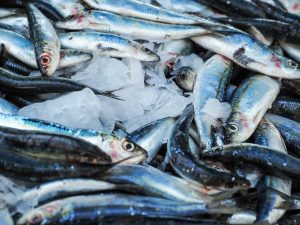 Scientists from the Queensland Department of Agriculture and Fisheries completed an updated stock assessment in 2021 that found that the east coast Spanish Mackerel stock is between 14 and 27% of the unfished biomass, with the most likely scenario that it is currently at 17% of unfished levels. This stock assessment used a sophisticated scientific model, which was then independently peer-reviewed and endorsed by the Queensland Fisheries Sustainable Fisheries Expert Panel.
Scientists from the Queensland Department of Agriculture and Fisheries completed an updated stock assessment in 2021 that found that the east coast Spanish Mackerel stock is between 14 and 27% of the unfished biomass, with the most likely scenario that it is currently at 17% of unfished levels. This stock assessment used a sophisticated scientific model, which was then independently peer-reviewed and endorsed by the Queensland Fisheries Sustainable Fisheries Expert Panel.
It is also worth noting that the Great Barrier Reef Marine Park Authority (GBRMPA) supports the findings of the 2021 stock assessment and considers it to be robust, data-rich and in line with national and international best practice.
Clearly something needs to be done. The Queensland Fisheries Working Group for Spanish Mackerel have considered a variety of options, from a moratorium to a temporary, annual closure. The bottom line is that significant management changes that will reduce the harvest of all fishery sectors are required to rebuild the Spanish mackerel stock. It is time to bite the bullet.
The wrong thing to do is to challenge the science, which seems to be the tactic of choice these days when all else fails. Too often we see industry leaders and politicians with little to no scientific background use this tactic. So, it is disappointing to see this tactic now being employed in an attempt to discredit Spanish Mackerel research. How will that help the fish recover?
Obviously, there is concern for the future of professional fishers and fish retailers who depend on the Spanish Mackerel for their livelihood. But more importantly, their livelihood is dependent on a healthy Spanish Mackerel population. Let the scientists and managers do their jobs.
 Your Whitsunday Conservation Council (WCC) supports the Queensland Government’s efforts to protect the Spanish Mackerel and save the Spanish Mackerel fishery.
Your Whitsunday Conservation Council (WCC) supports the Queensland Government’s efforts to protect the Spanish Mackerel and save the Spanish Mackerel fishery.
In a recent Queensland Fishery survey, the WCC responded with the following conservation points:
- Full closure of the Spanish mackerel fishery to all sectors for 2 years. According to the stock assessment this will allow the fishery to build back to at least 24% of its unfished biomass, which is above the point at which a fishery is considered depleted.
- Following the 2-year closed period a gradual increase in fishing pressure until the stock reaches Maximum Sustainable Yield (at approximately 40% of unfished biomass)
Fishing rules would include:
- A 12wk seasonal closure in each of the northern (Sep-Nov) and southern regions (most suitable period early in the calendar year). Note this is not an option on their survey but provides the most protection to spawning aggregations
- Seasonal closures apply to all sectors
- A commercial total allowable commercial catch (TACC) initially set at 53t, that gradually increases in line with stock assessment recommendations to ensure the stock reaches maximum sustainable yield (MSY) within 10 years.
The Great Barrier Reef is a global icon, a World Heritage Area, and dear to the hearts of all Australians. Fisheries management within a world heritage area should be held to the highest possible standards, and that includes ensuring that fish stocks are not overfished.
WCC will endeavour to keep its members informed regarding the conservation of the Spanish Mackerel on the Great Barrier Reef.
UNESCO’s World Heritage Committee was due to meet June 2022 to determine the fate of the Great Barrier Reef’s World Heritage Listing. But the Reef has received a possible reprieve as UNESCO has postponed the meeting.
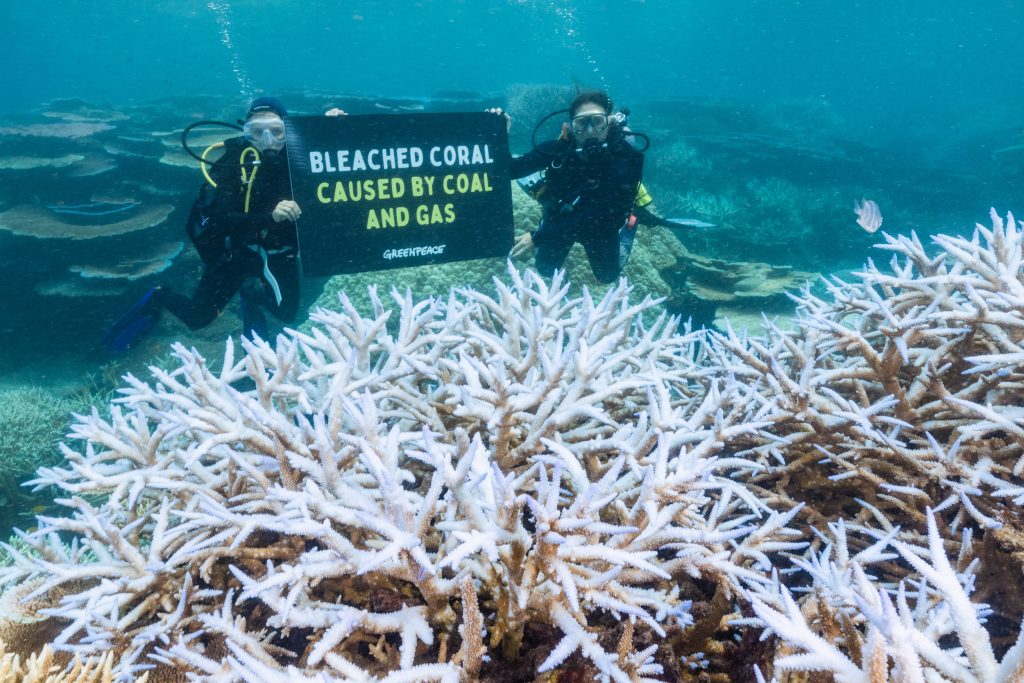
Divers holding a sign underwater on the Great Barrier Reef, near bleached coral [photo Greenpeace]
Coral bleaching – The Great Barrier Reef Marine Park Authority has just confirmed the Reef has been hit with a sixth mass coral bleaching event on record, with recent aerial surveys showing almost no reefs across a 1,200km stretch escaping the heat. That’s 4 major bleaching events in the past 6 years. The Reef needs 10-15 years to recover from a serious bleaching event.
La Nina – We are in the midst of a La Niña weather pattern, which usually brings cooler temperatures, as well as cloud and rain, and protects the reef from bleaching. But not this year because global warming, fuelled by the burning of fossil fuels, has caught up with us. Now, even a cool year is too hot for the Reef.
The most recent IPCC report makes it very clear, that if we don’t significantly bring down carbon emissions by 2030, we will be seeing annual bleaching events by 2044.
Reef in danger – the UNESCO reactive monitoring team has recently visited the Reef to gauge its health and determine whether it should be listed in danger. Probably an unnecessary trip. The Reef is in danger. No amount of government spin can change that.
But the previous government continued to push back against an in danger listing, as it would have exposed their total lack of effective climate policy.
Given that the greatest threat to the future health of the Reef is climate change, declaring the Reef in danger is the best way to protect it. Climate change requires a collaborative, worldwide effort to combat it. The “in danger” listing will bring the focus of Australia and the world onto the Reef and together we can protect it.
 We have only a decade to get our house in order by rapidly transitioning from coal and gas to clean energy like wind and solar in order to bring carbon emissions down. If we truly care about the future of the Great Barrier Reef, we must hold our government accountable and insist that Australia develops an effective climate policy.
We have only a decade to get our house in order by rapidly transitioning from coal and gas to clean energy like wind and solar in order to bring carbon emissions down. If we truly care about the future of the Great Barrier Reef, we must hold our government accountable and insist that Australia develops an effective climate policy.
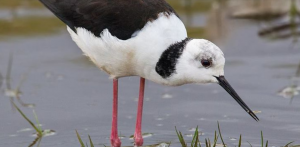 Wildlife & Plants of the Whitsunday & Mackay Region
Wildlife & Plants of the Whitsunday & Mackay Region

 Snakes of the Whitsundays
Snakes of the Whitsundays
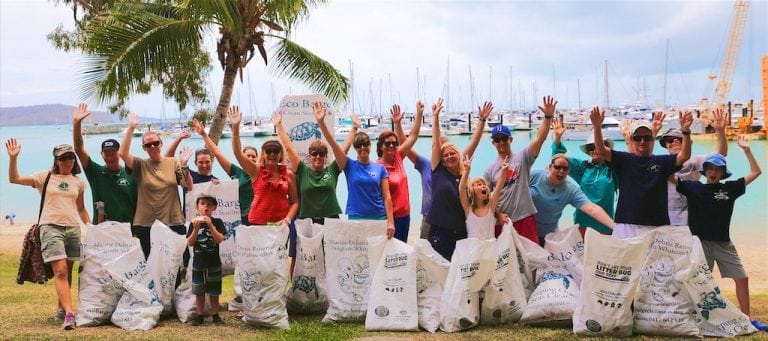 Apart from collecting plastic and other rubbish that we humans carelessly leave everywhere, there is a tremendous Camaraderie in Clean Up.
Apart from collecting plastic and other rubbish that we humans carelessly leave everywhere, there is a tremendous Camaraderie in Clean Up.
The two titans that we have to thank for removing thousands of tonnes of waste material are our local Eco Barge Clean Seas and Australia wide Tangaroa Blue Foundation. Both of these wonderful organisations are featured on our We Care page.
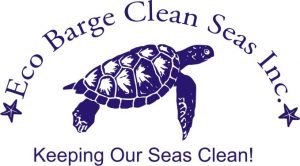 Please check these logo links now for news and clean up dates in your area
Please check these logo links now for news and clean up dates in your area 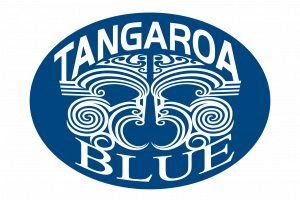
 If you are like most people, you probably put renewal notices in the “do later” folder and hope that it takes care of itself.
If you are like most people, you probably put renewal notices in the “do later” folder and hope that it takes care of itself.
The subscription is either too much so you decide not to renew, or too little so you feel you can’t be bothered and that it won’t make any difference anyway.
Have a look at our Treetops webpage and go to the bottom of the list to find Charlie Pickering takes on Alan (cash for comments) Jones over his famous “grain of rice” Australia is too small to make a difference on climate change.
Each subscription to WCC is like that grain of rice, not just in monetary terms but in terms of building an effective force that will get your voice heard by governments at all levels. We ask only for a $1 but having you as a member makes us a million dollar force for environmental awareness.
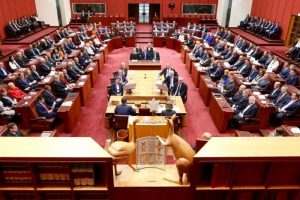 But there is more to it. The federal government makes it hard for charitable environmental organisations to exist in Australia. We are bogged down in red tape and membership numbers is one of them.
But there is more to it. The federal government makes it hard for charitable environmental organisations to exist in Australia. We are bogged down in red tape and membership numbers is one of them.
So please, make your membership worth a million dollars and renew as soon as you get the renewal notice. Many thanks.
